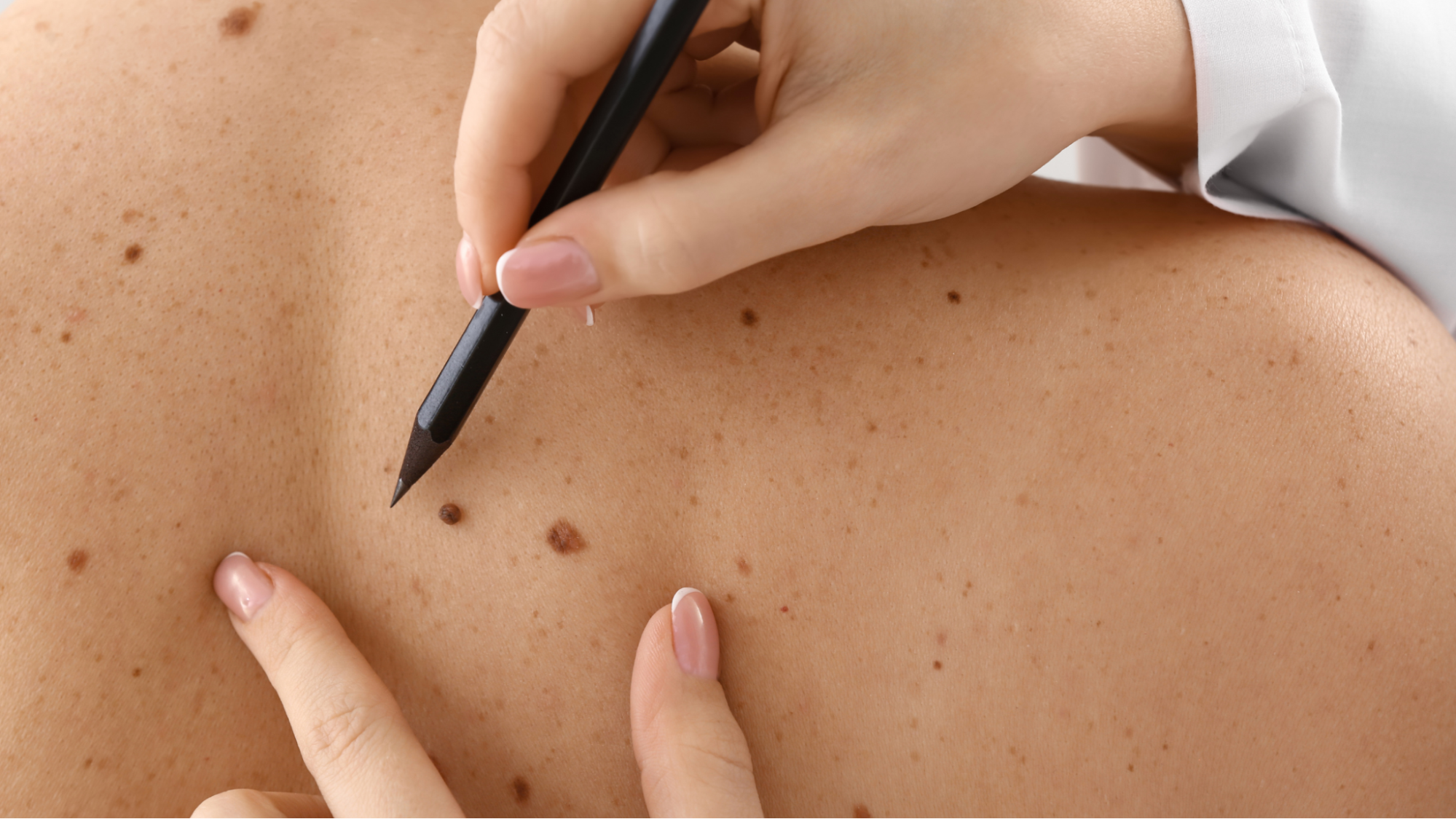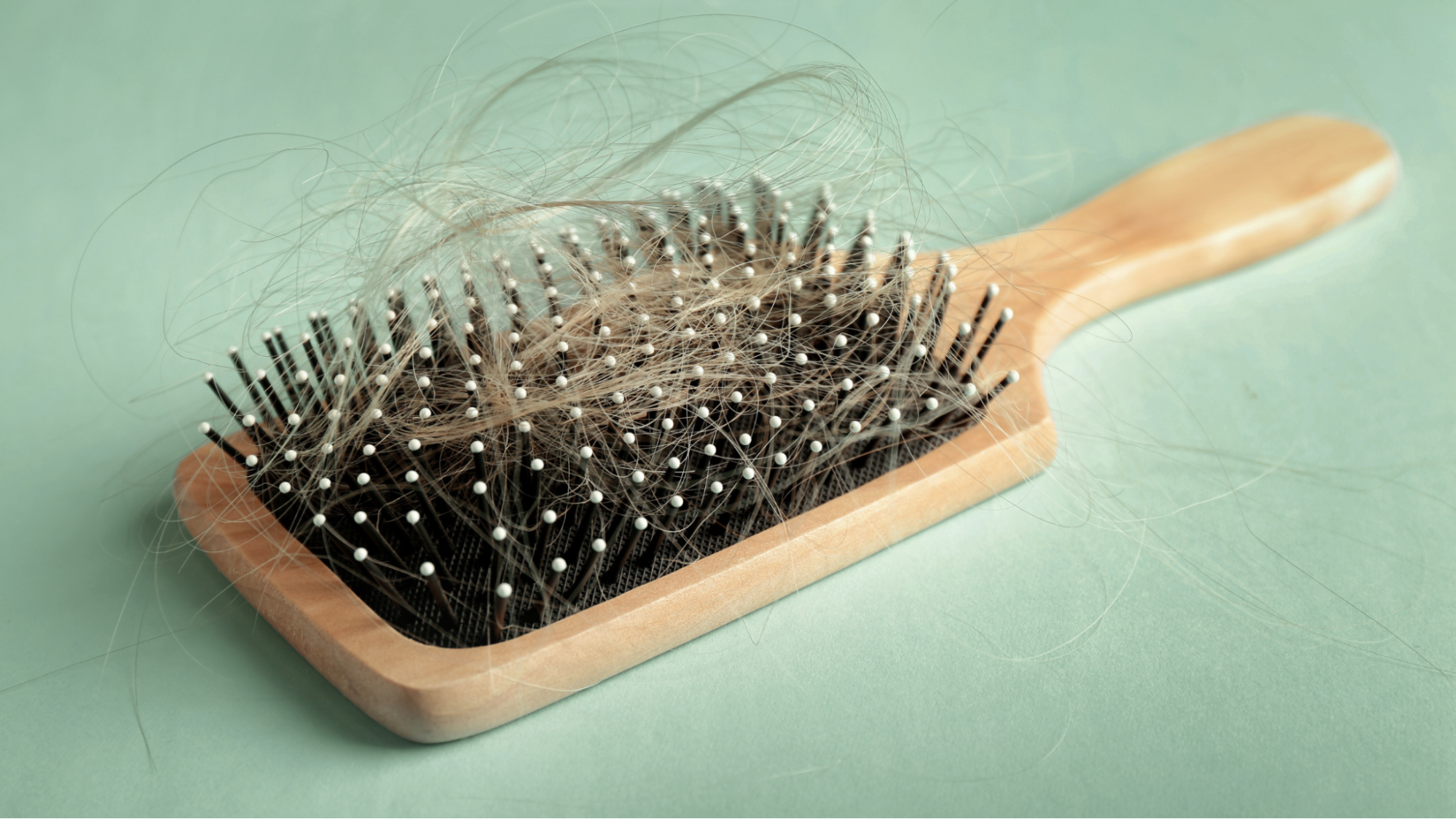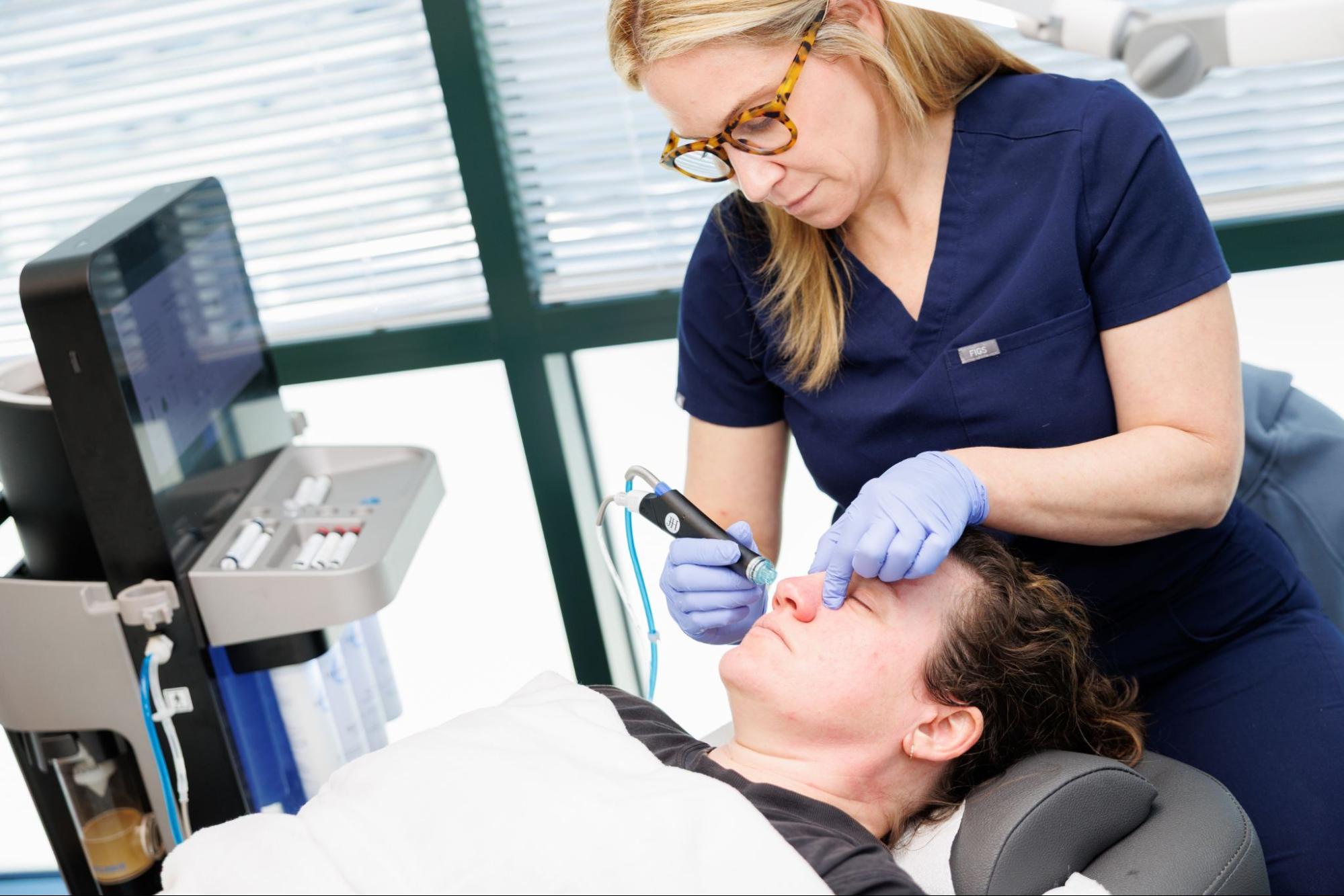So, you went on spring break, rocked that new swimsuit, and then—wait—what’s that? A new spot on your skin? It might just be a mole; chances are, it’s nothing to worry about. We all have moles; most of the time, they’re harmless and just part of who we are. However, some moles can change over time, and that’s when we start paying more attention. Skin cancer is one of the most common types of cancer, but the silver lining? If you catch it early, it’s very treatable. The trick is knowing when a mole is just a mole—and when it might be something more.
What Are Moles?
Let’s start with the basics. Moles—also called nevi—are those little spots that form when pigment-producing skin cells bunch up in one place instead of spreading out. They can appear anywhere on your body and vary in color, shape, and size. Most people have between 10 and 40 of them, which usually pop up when you’re younger. For the most part, moles are nothing to worry about. But if you notice a new one after your 20s—or if an old one starts to change—it’s time to give it more attention.
When Should You Start Paying Attention?
Let’s be honest—most of us don’t spend much time studying our moles. They’re just there. But some changes can be worth a second look. The ABCDE rule makes it super simple if you’ve ever wondered what to watch for.
The ABCDEs of Skin Cancer
One of the most common ways to evaluate whether a mole might be problematic is by following the ABCDE rule. This simple acronym stands for:
- A for Asymmetry – Healthy moles are generally symmetrical. If one half of a mole doesn’t match the other half, it’s something to consider.
- B for Border—A normal mole will have smooth, even borders. If the border is irregular, jagged, or blurred, it could be a warning sign.
- C for Color—Most moles are a single color, typically brown or black. If your mole has uneven coloring or multiple shades of brown, black, blue, red, or even white, it may need to be checked.
- D for Diameter – Moles larger than the size of a pencil eraser (about 6mm) should be watched closely. Moles that grow larger over time could be a cause for concern.
- E for Evolving – This is probably the most important factor. If a mole starts changing in size, shape, or color, or if it starts itching, bleeding, or becoming painful, it’s time to see a professional.
Now, here’s the thing: not every imperfect mole is cancer. Some might be a little bumpy or off-center and still be harmless. But if something’s different or doesn’t sit right with you, trust your gut and get it checked out.
Why Early Detection is Crucial
Here’s where early detection shines. Melanoma, one of the most serious types of skin cancer, can spread quickly. But when caught early, treatment is often straightforward and very effective. What is the best way to stay ahead of it? Keep an eye on your skin and schedule regular skin checks, especially if you have a family history of skin cancer or lots of moles.
What to Expect During a Skin Check
A professional skin check is simple, painless, and super important. Your dermatologist will closely examine your skin from head to toe—yes, even your scalp, ears, and feet. They’ll look for anything unusual and might use a small tool called a dermatoscope to get a better view. If they spot something suspicious, they may recommend a biopsy. It sounds scary, but it’s usually a quick and easy process where they remove a tiny sample to send to a lab for testing.
What Can You Do to Reduce Risk
Now that you know what signs to watch for, how do you reduce your risk for skin cancer? Good news—there’s a lot you can do. Here are some general guidelines:
- Protect Your Skin – The best way to prevent skin cancer is to protect your skin. This means wearing protective clothing, regularly applying sunscreen, and avoiding direct sun during the sunniest parts of the day.
- Avoid Tanning Beds – Tanning beds and sunlamps emit harmful UV radiation that can damage your skin and increase your risk of skin cancer. If you want that sun-tanned glow, try self-tanning lotions or professional spray tans.
- Routine Skin Checks – Even if you don’t have any noticeable changes, it’s still a good idea to get a professional skin check at least once a year, especially if you have a family history of skin cancer or a lot of moles.
Don’t Wait
It’s your skin, and paying attention to it is a form of self-care. If you notice a new mole or one of your usual spots starts acting differently, don’t brush it off. Schedule a check-up. It’s quick, easy, and could give you peace of mind—or catch something early when it’s easiest to treat.
Your skin is with you for life. Take care of it, keep an eye on it, and when in doubt, call your dermatologist.






